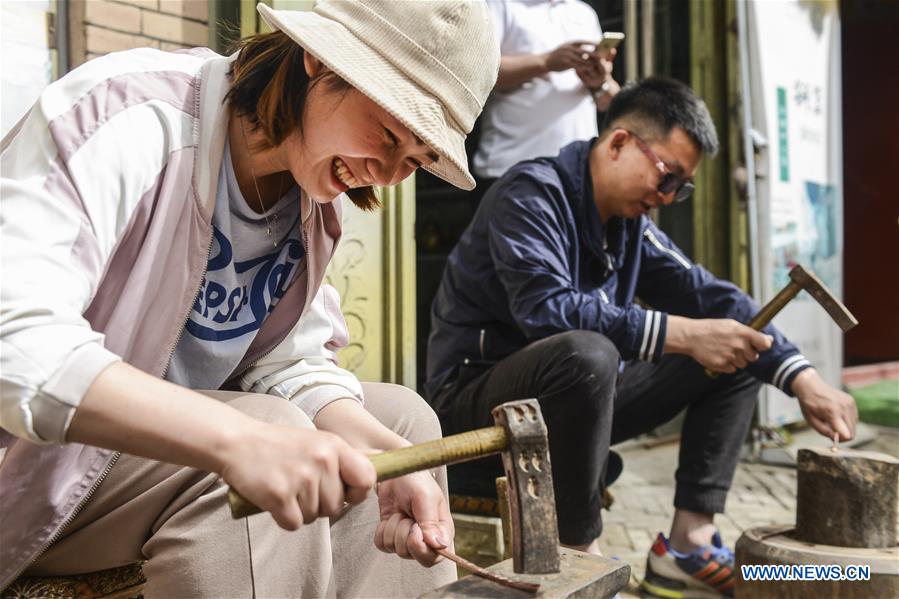Authentic Kashgar, Uygurs offer tourists their hearts, home
Around 220,000 people live in the Old Town area of Kashgar, and they are known for their laid-back attitude and bustling bazaars, which heave with local food, handicrafts, antiques and jewelry.
It's only just begun
Immersive travel isn't just for accommodation pioneers like Guli, who can earn 8,000 yuan (1,167 U.S. dollars) a day in high season. For Tursun Zunun, a renowned potter, immersive travel has brought him students who can pass on the centuries-old craft.

Tursun Zunun (R), a renowned potter, helps an Italian tourist Laura (L) shape clay at his home in Kashgar, northwest China's Xinjiang Uygur Autonomous Region, May 18, 2018. [Photo/Xinhua]
Immensely proud of his rustic pottery, Tursun, 60, is the only person in the family who continues to practice his dying craft. To ensure his ancestral legacy lives on, the master needs an apprentice.
Part of Tursun's workshop is a gallery, which is open to anyone passing by. To his surprise, one day two tourists from the Republic of Korea came to his door, hoping to learn the old craft.
"Traditionally we avoid teaching the family craft to strangers. But I don't mind breaking this rule," said Tursun, "I gave them Uygur names, Yishajan and Yumitijan. They are my apprentices."
More and more workshops have opened their doors to tourists, and people can spend half a day learning how to make a copper bracelet, or a wooden bowl.

A tourist Tang Qiao (L) learns to make a bronze bracelet at a coppersmith shop in Kashgar, northwest China's Xinjiang Uygar Autonomous Region, May 26, 2018. [Photo/Xinhua]
"We will keep maintaining Old Town so that our residents can benefit from tourism," said Deng Zhiyong, vice director of Kashgar's tourism bureau.
According to the bureau, in the first half of this year, the city received 1.57 million tourists, up 29.8 percent year on year.
As a key region on the Silk Road Economic Belt, Xinjiang has seen a boom in tourism under the Belt and Road Initiative, proposed by China in 2013.
Last year, Xinjiang received more than 100 million tourists, the highest figure in its history. Consumption in the sector hit 180 billion yuan (28.5 billion U.S. dollars), a 30-percent increase. This is great news for people like Guli.
"The development of tourism in the Old Town means that young people like us now have more opportunities. We can choose different paths from our ancestors. We can create better conditions for our children to grow up," said Guli.
Guli plans to open more bedrooms on the second floor of her homestay as more people turn to home sharing platforms like Airbnb.
"By meeting people from so many places, I've made many friends and broadened my horizons," said Guli, "What's next for the travelers? I'm working on it."

